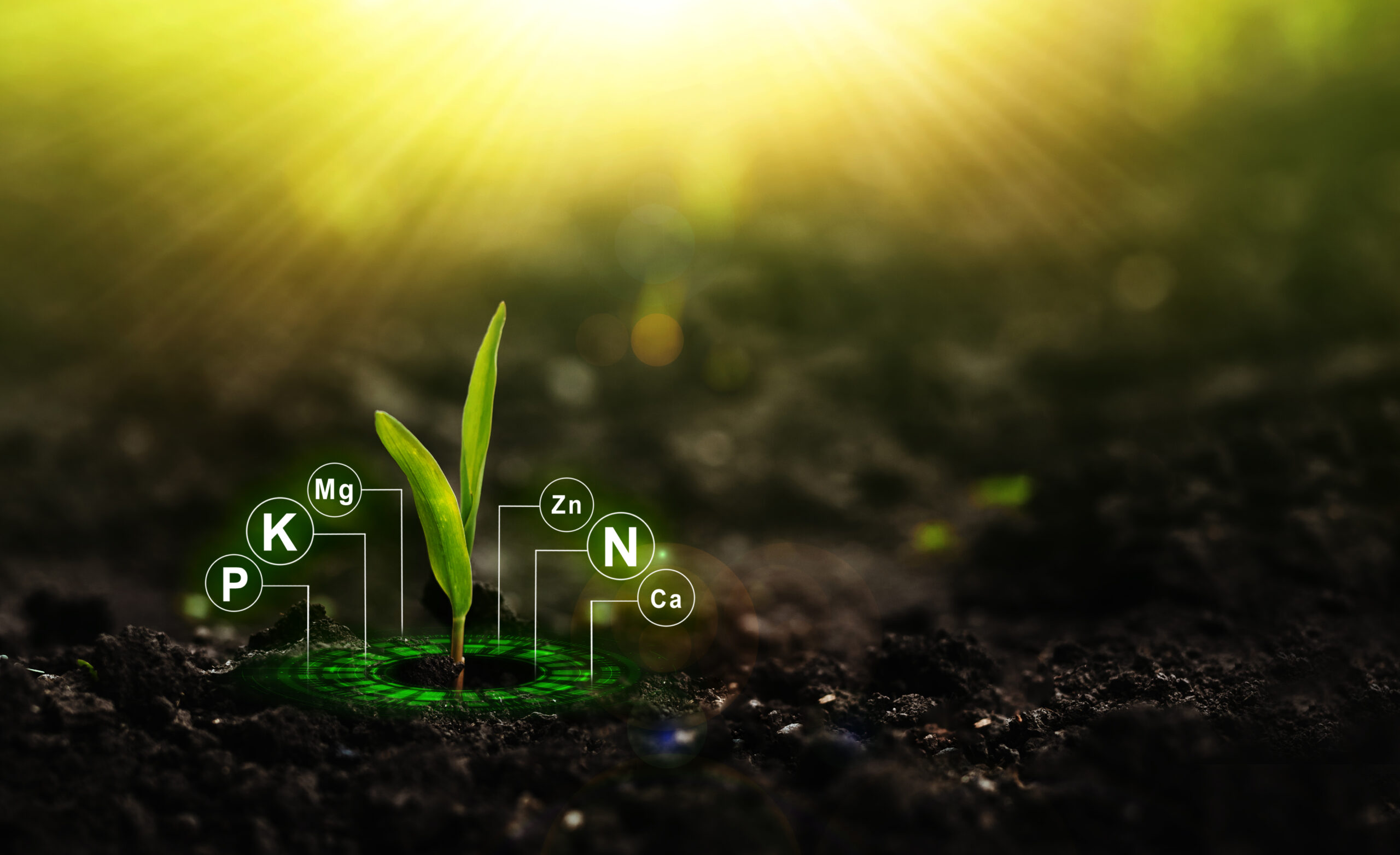
Indian farmers have been utilizing their geographical awareness and traditional modes of cultivation for generations to cultivate healthy crops. But with the new global pressures on farm cultivation and the necessity to grow more, how to nourish your crops is the call of the hour. That is where this NPK fertilizer guide becomes useful.
Finding out about what NPK is, why you should care, and how to use it correctly can make a big impact on your farm yield. The NPK fertilizer guide will take you through the fundamentals, providing you with simple-to-follow, practical tips for Indian agricultural conditions.
What is NPK and Why Should You Care?
Just like human beings, plants also require energy. Just like how humans need the right proportion of nutrients so that they are healthy and fit, plants also need their food so that they can be healthy. The three basic nutrients that any plant needs are Nitrogen (N), Phosphorus (P), and Potassium (K).
Together, all these three are referred to as NPK and are the foundation of this NPK fertilizer guide.
What the Numbers Mean: A Complete Definition of NPK
The following is what each letter of the NPK stands for:
N – Nitrogen: It causes the plants to produce green, leafy development. It is mostly needed to produce chlorophyll, essential in helping plants capture energy from direct sunlight. Without enough nitrogen, they will not grow fast or at a thick rate.
P – Phosphorus: Helps in root development and flower and fruit formation. It also has an important role in transmitting the energy inside the plant to make the plant hardy and grow strong and large.
K – Potassium: Promotes plant vigor and resistance to disease and weather. It even increases the size of the fruit, its taste, and its storage life.
When you open a bag of fertilizer and you see 10-26-26 or 19-19-19 on it, those are the proportions of each element. So, like with the 19-19-19 NPK fertilizer chart, it will tell you that it contains 19% nitrogen, 19% phosphorus, and 19% potassium by weight.
N, P, and K: What They Do for Your Plants
Knowing what each one does means you can use the right NPK fertilizer table for your crop needs.
Nitrogen (N): The Green Booster
Nitrogen maintains your plants growing quickly and forming strong leafy tissue. It’s a chlorophyll and protein source, which is necessary for healthy growth.
Why it’s important:
- Leafier greens
- Stronger stems
- Faster all-around growth
Indications of too little nitrogen: Yellow leaves (lowest ones first), poor growth, washed-out appearance
Vegetables that perform well with a nitrogen boost: Leaf greens such as spinach, lettuce, and fastest grasses.
Phosphorus (P): Root and Flower Promoter
Phosphorus promotes roots and induces flowering and fruiting in plants. Phosphorus is a part of energy transfer within a plant, especially at the beginning of the growing season and in flowers.
Why it is required:
- Healthy root growth
- Increased flowers and fruits
- Improved seed development
Symptoms of a lack of phosphorus: Purple or reddish-colored leaves, weak roots, fewer flowers or fruits
Plants requiring additional phosphorus: Root crops (e.g., potatoes, carrots), flowering crops (e.g., peppers, tomatoes)
Potassium (K): The Quality Builder
Potassium promotes healthy plants and enables them to fight disease, drought, and cold. Potassium improves fruit quality, taste, size, storage life.
Why it’s needed:
- Greater resistance to stress
- Sturdy stems
- Better fruit quality
Symptoms of potassium deficiency:
Yellow or brown leaf ends, slender stems, poorly formed fruit
High-potassium demanding crops:
Fruit crops like bananas, grapes, and most vegetables
Different Types of NPK Fertilizer: Which One to Use?
The right NPK fertilizer guide, though, not only differs with your plants but also with the mode of application. The following are the most common types:
Granular NPK Fertilizers
They are dried pellets that you apply over or into the ground. They dissolve in tiny amounts cumulatively providing nutrients and are best used on field crops. Among the most widely available NPK fertilizer ratios for this type is 25-25-25, well-balanced to apply as general.
Water-soluble (Powder or Liquid) NPK Fertilizers
Water-solubles dissolve when water is added and release instant nutrients. Suitable for application through drip irrigation or spraying on leaves. Suitable for greenhouses or for precise feeding.
Controlled-Release NPK Fertilizers
They contain a coating that releases the nutrients slowly with time. Suitable for long-lived or perennial plants. They reduce how frequently you fertilize and reduce wastage.
Organic vs. Synthetic NPK Fertilizers
When choosing what kind of fertilizer to apply, farmers find themselves wondering do I use synthetic or organic? Both have their pros and cons, and this part of the NPK fertilizer guide will help you make a better choice for your case.
Synthetic NPK Fertilizers
They are chemical man-made fertilizers that release nutrients in a very strong, forceful way. They are fast and would normally be used in commercial farming where a quick impact is needed. If you want to experience fast-growing plants, synthetic NPK fertilizers can be useful. They can however affect soil health in the long run when overused.
Organic NPK Fertilizers
Organic manure are natural substances like compost, cow dung, bone meal, and rock phosphate. They break down slowly and release the nutrients. Although slower acting than their synthetic equivalents, they nourish the soil, form microbial life, and provide long-term sustainability. For Indian farmers making the transition to green farming, an organic manual to NPK fertilizer would be a revolution. Humic Factory is one such company that sells organic NPK as a natural method of inducing the plants’ growth.
How to Use NPK Fertilizer Effectively: Indian Farmer’s Handbook
The use of fertilizer is not about splashing around everywhere on your farm. A good NPK fertilizer handbook teaches you how to use them most effectively based on your soil, crop, and plant growth stage.
Start with Soil Testing
Sample the soil before applying any NPK. It will tell you what you have and what you need. A soil test avoids overapplication, is economical, and provides your crop exactly what it needs. It is the starting point and most important step in any effective NPK fertilizer guide.
Comparing NPK Ratios to Phases of Crop Growth
Not all growth phases of plants need the same nutrients. A quality NPK fertilizer chart indicates how to vary the ratio based on the growth phase:
Seedling Phase:
New growing roots need more phosphorus. Try a mix like 10-52-10 or 0-52-34.
- Vegetative Phase: Leaves and stems are developed by plants at this phase. Use high-nitrogen blends like 40-10-10. Try a mix like 10-52-10 or 0-52-34.
- Flower and Fruit Stage: NPK equal or potassium-rich mix like 10-10-40 or 0-5-65 to achieve maximum flower and fruit quality.
- Maturity and Harvest: Maximum potassium gives maximum flavor, size, and storage quality.
The right NPK follow-up at every stage guarantees better plants and more yields.
Best Modes of Application for Maximum Return
It’s not so much what you lay down, as where and how you lay it down. Your NPK application pattern graph should contain the following:
- Broadcasting: Widespread spreading of granular NPK over your land. Most suitable for cereals and large fields.
- Fertigation: Fertilizer dissolved in water and supplied to your drip irrigation. Water and fertilizer conserving. Best used by vegetables and fruit trees.
- Leaf spraying: Spraying liquid NPK into leaves for instant absorption. Great for fixing deficiency right away.
Don’t Make These Mistakes
Even the good fertilizer will fail if applied improperly. This NPK fertilizer guide is some of the most common mistakes to steer clear of:
- Overuse: Excessive fertilizing will kill plants and contaminate water and soil.
- Timing is everything: Planting the wrong crop at the wrong time leads to flowering or fruiting that’s delayed.
- Lack of Micronutrients: NPK is required, but don’t forget micronutrients such as zinc, iron, and boron.
- Sub-Optimal Storage:Keep NPK fertilizers in a dry, cool location away from children, pets, and water access.
Benefits of an NPK Fertilizer Guide
Following the right NPK fertilizer guide has great benefits for Indian farmers:
Improved Yields: With balance in nutrition, there’s improvised produce and quality produce.
Healthier Plants: Healthy plants are disease- and drought-resistant.
Nutritional Soil: Particularly with organic NPK, your soil becomes richer and more productive in the long term.
Economic Efficiency: Understand that your plants’ requirements avoid wastage and reduce input expenses.
Conclusion
With this NPK fertilizer guide, Indian farmers can make knowledgeable choices, increase yields, and pass down their land to their children. Remember: it’s not a matter of utilizing fertilizers it’s a matter of utilizing them judiciously.
